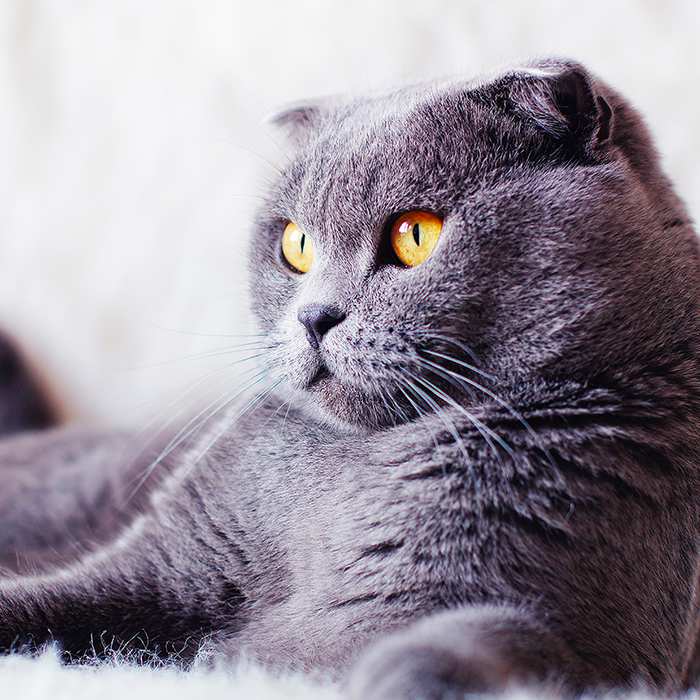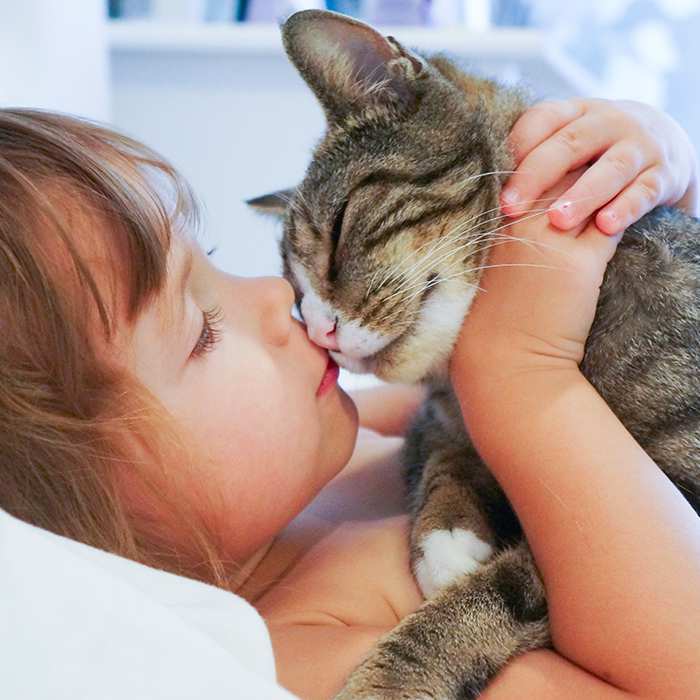Ten common health problems for cats
Unfortunately, health related problems in our pets are a part of life, affecting the young, the elderly, and every age and stage in-between. While most cat owners try their best to keep their pets healthy and happy, certain conditions can occur that are simply beyond their control. Although it’s something we’d all rather avoid thinking about, it’s important to educate ourselves about which conditions, illnesses or diseases are most likely to affect our felines.

There are many illnesses and conditions that can affect cats and it’s surprising to learn just how common some of these can be. The fact is, after pet food, veterinary services account for the second largest category of on-going expenditure by pet owners, according to the 2022 Pet Survey Report.
In this survey of 659 Australian cat owners, 69% reported that they had taken their cat to the vet in the prior 12 months, and most of them visited the vet multiple times, averaging 1.9 annual visits per cat. After general check-ups, vaccinations and de-sexing, the next most common reasons for vet visits were skin, ear and eye conditions, gastrointestinal issues and dentistry.
 We’ve put together a list of some of the most common health problems that we hear about every day at Bow Wow Meow—some are not so serious while others will need more specialised care. In all cases, please don’t rely on Dr Google for a diagnosis or treatment plan!
We’ve put together a list of some of the most common health problems that we hear about every day at Bow Wow Meow—some are not so serious while others will need more specialised care. In all cases, please don’t rely on Dr Google for a diagnosis or treatment plan!
To ensure the most favourable outcome for your precious pet, it’s always best to consult your vet as soon as possible. Your vet will provide a plan for management and treatment that is optimised for your cat, taking into account individual factors such as its breed, size, age and general health.
Most of the time it’ll be something easily treatable like fleas or a minor ear infection. But sometimes cats will become seriously ill and it’s a good idea to have an idea what you and your kitty are facing.
1. Kidney disease

Kidney disease is a very serious threat to a cat’s health. Kidney disease occurs when 75% or more of the kidney’s tissue is failing to carry out its filtering function—separating toxins from the body.
If left untreated, failing kidneys, which play an essential role to your cat’s day-to-day functions, can even result in death. Older cats and cats that are allowed to go outside are far more likely to develop kidney disease than young indoor animals.
Symptoms to look out for include drinking far more water, increase in urination, vomiting, diarrhoea, and fast and excessive weight loss.
Learn more about kidney disease in cats here.
2. Diarrhoea
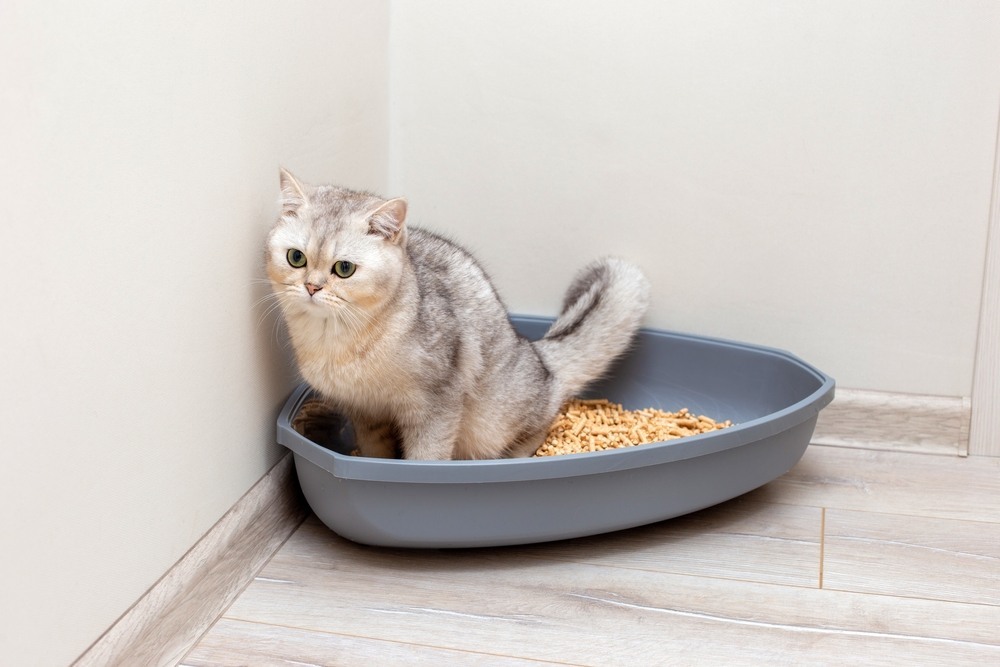
We all know what diarrhoea is, but what does it mean for cats? If your cat is suffering from a loose, watery or inconsistent stool, then they have diarrhoea symptoms.
Reasons for diarrhoea in cats vary wildly, but some common causes include a sudden change in diet, an allergic reaction, new medication, internal parasites like worms, kidney or liver disease, or inflammatory bowel disease.
If your cat has diarrhoea there’s no need to panic—often the cause will be a simple one like a small bacterial infection or a dairy intolerance. If it continues for several days, however, it’s a good idea to see the vet for a check-up.
Learn more about diarrhoea in cats here.
3. Dental disease
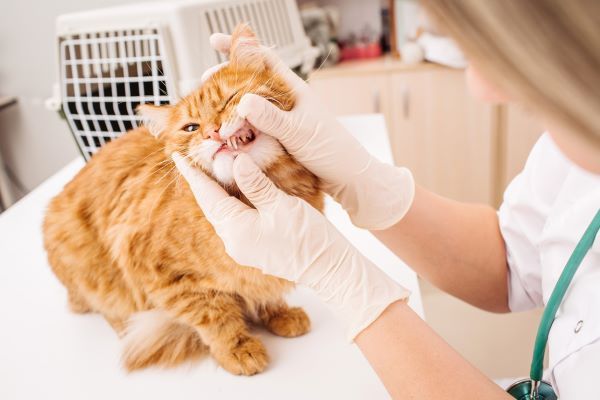
Periodontal or ‘gum disease’ in cats is a common problem and occurs when plaque (which is a bacteria) grows on the surface of the teeth.
If plaque isn’t cleaned from the cat’s teeth, then it will turn to tartar (hard yellow or brown deposits). Tartar is very difficult to remove and, it gets under the cat’s gum, can cause serious infection. If this infection gets out of hand, your cat could lose teeth.
A cat’s diet can be a factor in the development of periodontal disease in cats. Always try to give your cat a mixture of dry and canned food. Dry food is a good way to help clean the teeth.
Learn more about dental disease in cats here.
4. Broken bones
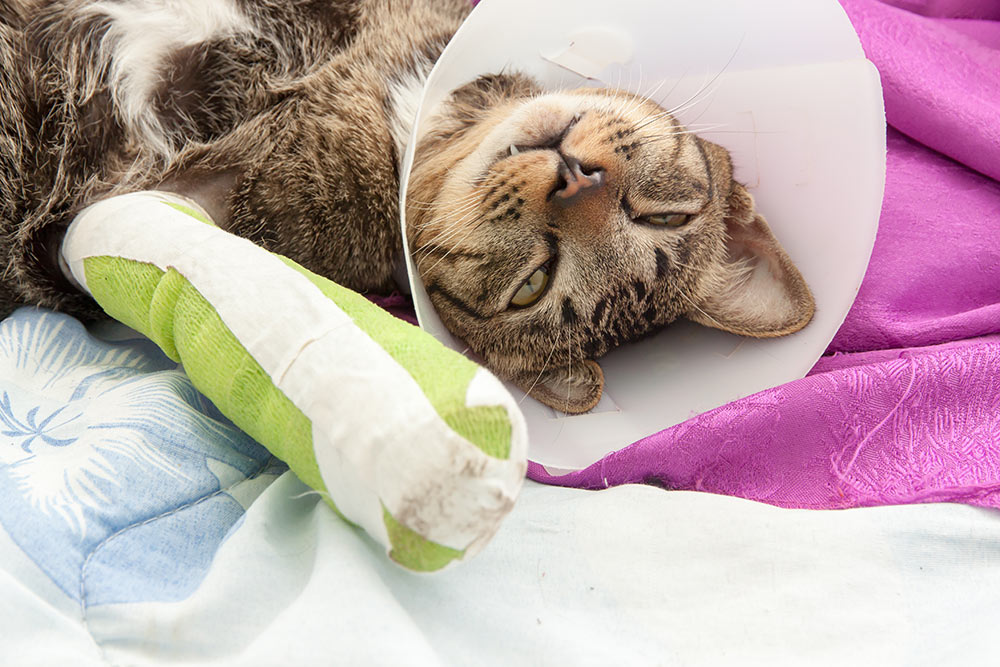
Especially common in outdoor cats, fractures or broken bones can easily occur but may be difficult to identify. It’s quite common for cats to be bowled over by passing cars or to fall from rooftops or trees when distracted or startled.
They can’t tell you that they’re in pain. Signs to look out for include moaning or howling more often, louder and for longer than usual, loss of appetite and swelling in the affected area. If your cat moans when touched gently, they are likely in pain.
If you feel your cat may have a broken bone, it’s essential you take them to the vet for a check-up as soon as possible. They will be in quite a lot of pain.
Learn more about bone fractures here.
5. Sneezing

This is something we’re often asked. When a cat is sneezing it can mean a number of different things.
Most of the time it will be an allergic reaction to something, or they may have simply gotten a tickle in their nostril. Your cat will need care, however, if they show these symptoms as well: fever, difficulty breathing, green or yellow discharge, heavy wheezing or cough, weight loss, reduced appetite.
Learn more about cat sneezing here.
6. Heart Worm

This was a very common parasite affecting both dogs and cats, however modern vaccines prevent most cases from occurring in Australia.
Heartworms are parasites that grow inside the cat’s heart and lungs, eventually filling the organs and choking them up over time.
The worms can still be found all over Australia and can kill if left untreated. For more information, see our heartworm guide.
Learn more about heartworm here.
7. Fleas
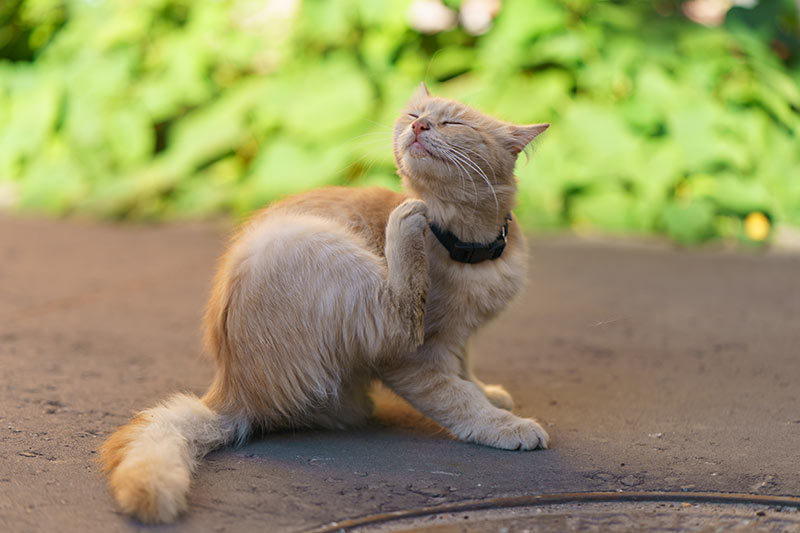
Fleas, as you’re probably already aware, is another one of things that nearly every cat will get during a lifetime. In fact, studies show that most cats will be born with fleas or have them for the first time shortly after their birth.
They can be knocked over quite easily with the right medication and you can find a number of products for sale at your local pet store.
Learn more about flea control and protection here.
8. Feline Immunodeficiency Virus (FIV)

Feline Immunodeficiency Virus (FIV) is a virus, similar to HIV in humans, that attacks the immune system of the cat and renders them more susceptible to a range of other illnesses and infections.
FIV cannot be cured but it can be controlled. Cats diagnosed with FIV will require treatment for the rest of their lives to help them fight off infection.
Symptoms of FIV include fever, discharge from the eyes or nose, sneezing, dental disease, poor coat condition and swollen lymph nodes.
Learn more about FIV here.
9. Cancer
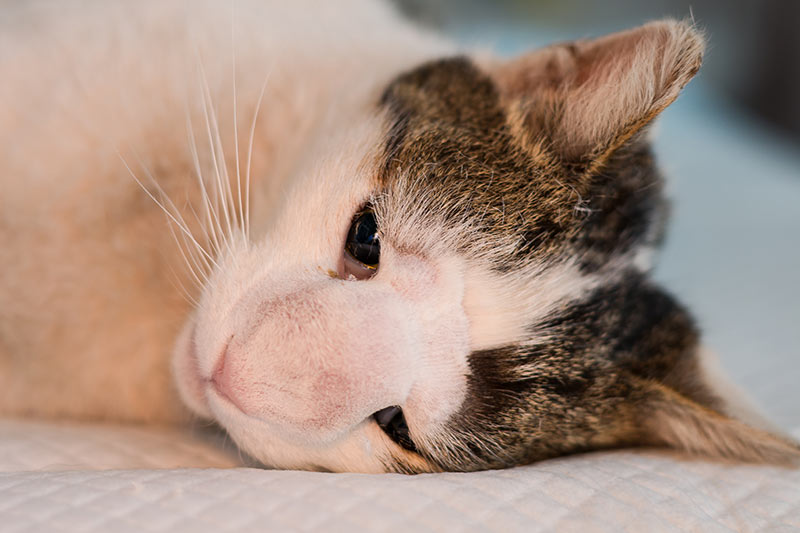
Unfortunately, just like us, cats may develop cancers as they get older and their bodies begin to show their age.
Cats can suffer from all the types of cancers we do, such as lymphoma, melanoma, breast cancer and even prostate cancer to name a few.
Treating cancer can take the form of surgeries, chemotherapy or radiation treatment. Like all cancers, catching it early is the most important thing, so look out for any unusual lumps or spots on your cat’s skin, ears and eyes.
Learn more about mass lesions here.
10. Obesity

Another common condition amongst Australian cats and one that often isn’t noticed or taken seriously is obesity.
If your cat is obese then they risk developing all sorts of related conditions such as heart disease, kidney disease, arthritis and many more. Indoor cats are especially prone to developing weight problems and their diet should be monitored properly.
Speak with your vet if you think your cat may be overweight. Treating your cat to their favourite meals may get them purring, but their health, at the end of the day, is the most important thing.
Bow Wow Meow Pet Insurance can help protect you and your kitten should an unexpected trip to the vet occur.
-
Find out more about our cat insurance options
-
Get an instant online pet insurance quote




